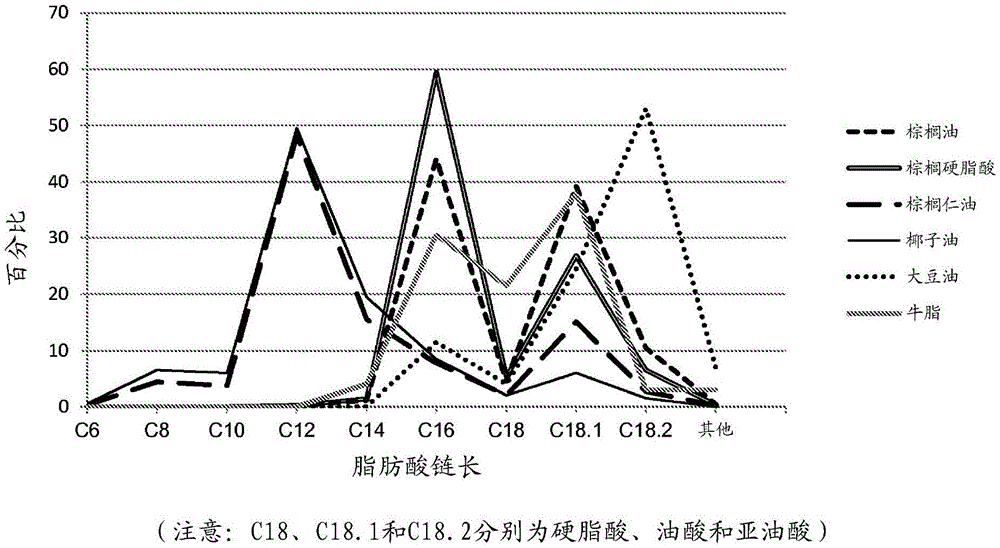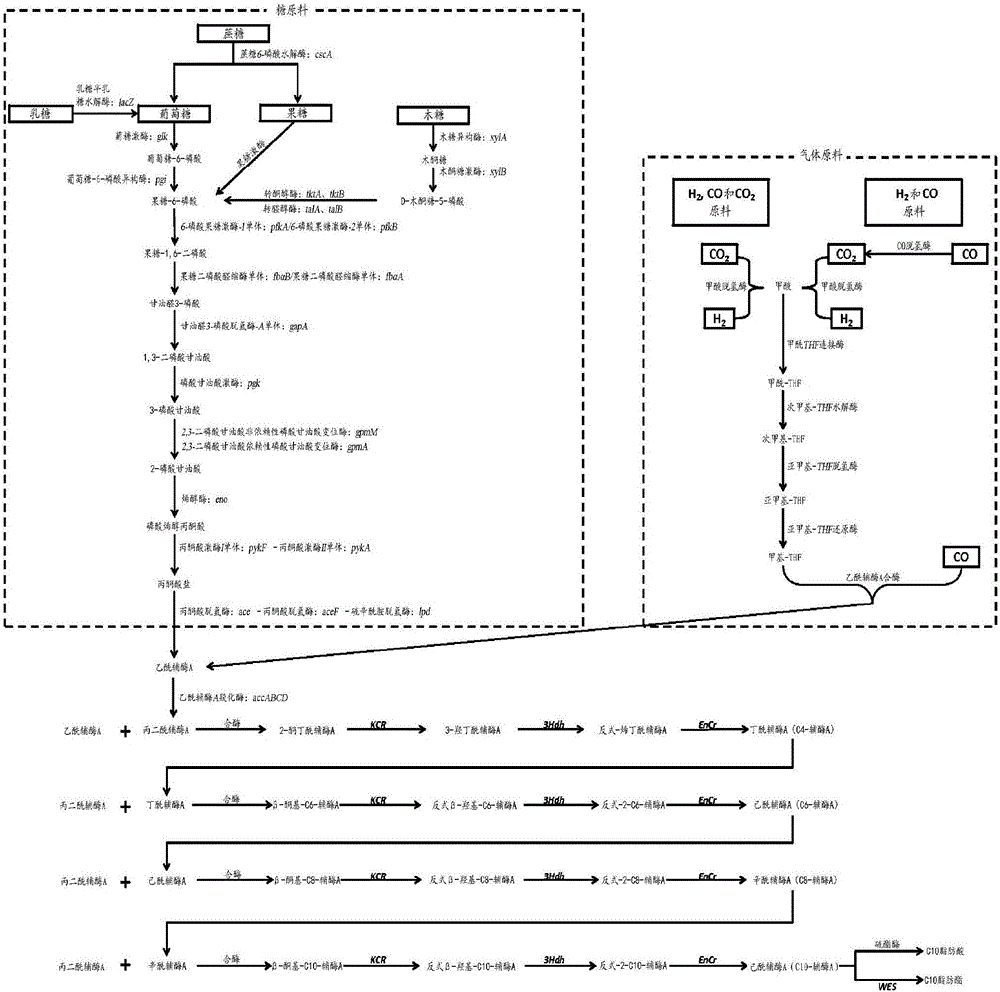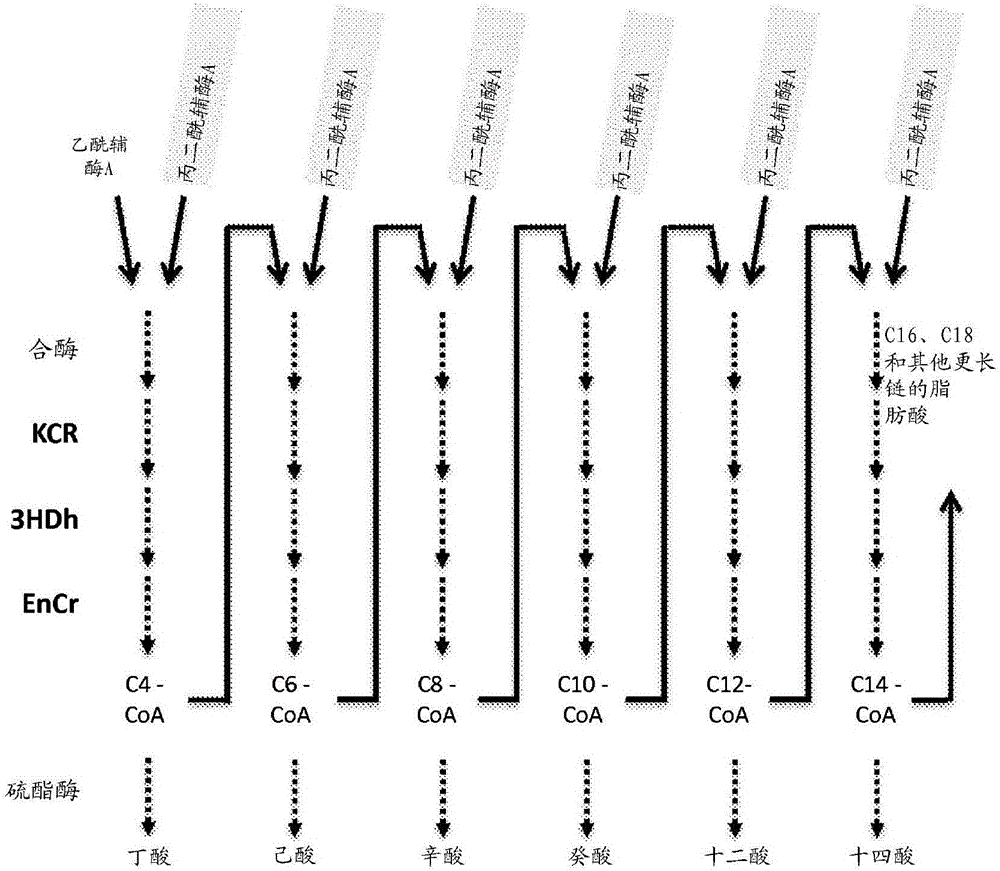Microorganisms and methods for the production of fatty acids and fatty acid derived products
A technology of fatty acids, products, applied in the field of genetically modified organisms
- Summary
- Abstract
- Description
- Claims
- Application Information
AI Technical Summary
Problems solved by technology
Method used
Image
Examples
example 1
[0404] Example 1 - NphT7 mutants
[0405] The enzyme NphT7 is a 3-ketoacyl-CoA synthase that is activated to generate 3-keto-C4-CoA in the presence of acetyl-CoA as a primer and malonyl-CoA as an elongation donor product; the native enzyme has no detectable activity on the longer-chain primer. Residue modifications were made to NphT7 to alter the acyl-CoA binding pocket to accept substrates with chain lengths greater than or equal to 4 carbons. These modifications are single amino acid changes, combinations of single amino acid changes, and targeted structural loop modifications that allow acyl-CoAs with chain lengths greater than or equal to 4 carbons (e.g., C4-CoA and C6-CoA) Acyl-CoA condensation reaction occurs. Groom according to the following criteria:
[0406] (a) Examining the crystal structure of the related enzyme fabH from M. tuberculosis (structure 1U6S in the Protein Data Bank), identifying the residues in Table 16 that contact the acyl chain. The correspond...
example 2
[0416] Example 2 - Strategies for Identifying 3-Ketoacyl-CoA Synthase Candidates
[0417] NphT7 is an ideal starting point for developing strategies to identify other 3-ketoacyl-CoA synthase candidates because, unlike the type II FAS 3-ketoacyl-CoA synthase (KAS) that uses malonyl-ACP as an elongator, NphT7 is able to use malonyl-CoA for targeting reactions, so NphT7 homologues are likely to retain malonyl-CoA specificity. In addition, KAS III from different organisms has been characterized by crystal structure and biochemical assays to determine its substrate binding site and substrate specificity. Unlike NphT7, KAS III from different organisms exhibits different specificities for long-chain or branched-chain acyl-CoAs. Similar information is available for KAS I and KAS II, but unlike KAS III, which utilizes acyl-CoA as a substrate for condensation reactions, KAS I and KAS II require acyl-ACP as a substrate. Thus, the known crystal structure of KAS III, together with its ...
example 3
[0483] Example 3 - Use of NphT7 variants and / or fabH homologues in combination with thioesterases to produce fats with specific chain lengths acid
[0484] Although mutants of NphT7 were engineered to be able to extend the acyl-CoAs of chain lengths C4, C6 and C10, the specific activity of these enzymes was relatively low for longer chain lengths. The acyl-CoA is extended by 2 carbons to form 3-ketoacyl-CoA. This reaction can also be carried out by ketoacyl-CoA synthase (called KASIII enzyme, encoded by fabH gene homologue). Many of these gene homologues were synthesized by commercial DNA synthesis suppliers (DNA2.0) using codons for optimal expression in E. Purify the protein. The gene was expressed in E. coli and KAS activity was determined using a DTNB assay specifically analyzing the release of CoA-SH induced by the condensation of malonyl-CoA and acyl-CoA of different chain lengths. Table 20 lists enzyme homologues that have sufficiently high levels of KAS activity ...
PUM
| Property | Measurement | Unit |
|---|---|---|
| optical density | aaaaa | aaaaa |
Abstract
Description
Claims
Application Information
 Login to View More
Login to View More - R&D
- Intellectual Property
- Life Sciences
- Materials
- Tech Scout
- Unparalleled Data Quality
- Higher Quality Content
- 60% Fewer Hallucinations
Browse by: Latest US Patents, China's latest patents, Technical Efficacy Thesaurus, Application Domain, Technology Topic, Popular Technical Reports.
© 2025 PatSnap. All rights reserved.Legal|Privacy policy|Modern Slavery Act Transparency Statement|Sitemap|About US| Contact US: help@patsnap.com



